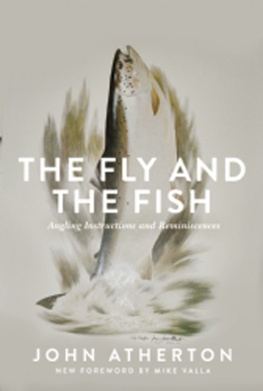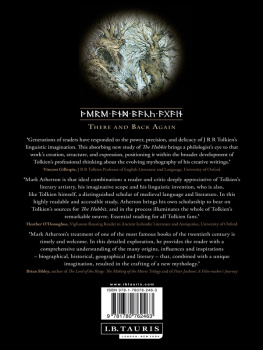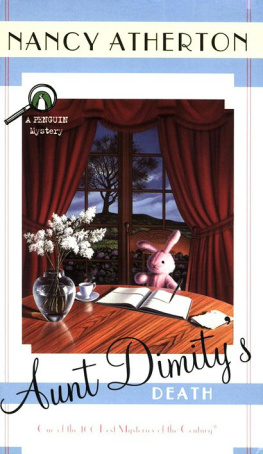Copyright 1951 by John Atherton
First Skyhorse Publishing Edition 2016
All rights reserved. No part of this book may be reproduced in any manner without the express written consent of the publisher, except in the case of brief excerpts in critical reviews or articles. All inquiries should be addressed to Skyhorse Publishing, 307 West 36th Street, 11th Floor, New York, NY 10018.
Skyhorse Publishing books may be purchased in bulk at special discounts for sales promotion, corporate gifts, fund-raising, or educational purposes. Special editions can also be created to specifications. For details, contact the Special Sales Department, Skyhorse Publishing, 307 West 36th Street, 11th Floor, New York, NY 10018 or info@skyhorsepublishing.com.
Skyhorse and Skyhorse Publishing are registered trademarks of Skyhorse Publishing, Inc., a Delaware corporation.
Visit our website at www.skyhorsepublishing.com.
10 9 8 7 6 5 4 3 2 1
Library of Congress Cataloging-in-Publication Data is available on file.
Cover design by Brian Peterson
Cover photo credit John Atherton
Print ISBN: 978-1-5107-0753-5
Ebook ISBN: 978-1-5107-0754-2
Printed in the United States of America
TO
MY WIFE
AND BEST
FISHING
COMPANION
Contents
Foreword
Over sixty-five years have passed since John Athertons now classic The Fly and the Fish was first published, yet the amazing intensity and scope of his narrative is still admired. Of all the hundreds of fly-fishing books and articles that fill my bookshelves, and that Ive read and enjoyed countless times over the past fifty years, The Fly and the Fish still stands as my favorite amongst them. The original 1951 Macmillan edition occupies a special place front and center on my shelf when its not back on my nightstand.
Contemporary flyfishermen and flyfisherwomen, too, have discovered and rediscovered Athertons epic work, sending new followers and recruits on searches for the original printing or the later Dover reprint that first appeared in 1971. The recent resurgence of both national and international interest in John Athertons unique observations and theories surrounding fly pattern design and style alone call for this new Skyhorse printing. But this tome offers so much more than simple theories.
My own appreciation and interest in John Atherton and The Fly and the Fish began in the late 1960s and early 1970s. Those were the years when, as a boy, I stayed with Walt and Winnie Dette at their home and fly shop in Roscoe, New York, during the fishing season. The Dettes were part of the so-called Catskill Mountains region school of fly tiers, artisans who practiced their craft near some of the most famous trout streams in Americathe Beaverkill, Neversink, Schoharie, and Willowemoc among them. The Dettes, along with other Catskill school fly tiers such as Rube Cross, Harry and Elsie Darbee, Ed Hewitt, and Art Flick are all mentioned in The Fly and the Fish . Their favorite rivers within the region are also mentioned in Athertons pages.
Readers will learn that Atherton dedicated the last chapter of The Fly and the Fish to his own favorite river, the Battenkill in Vermont, on whose banks he eventually built his house in the late 1940s. However, he was still very much a part of the Catskill fly-fishing story, and very much admired by the time I first fished the regions rivers.
Athertons name surfaced from time to time around both the Dettes fly shop and the Darbees shop up the road. Somewhere between the ribald jokes, adult humor that my young ears shouldnt have been exposed to, and the more serious fly fishing chatter that filled the fly shops and river banks in those years I first heard Athertons name. Hanging on the wall at the bottom of the staircase in the old Dette house were the color illustrations painted by Atherton of trout flies that appeared in John McDonalds May 1946 Fortune , now classic, magazine piece titled Trout Fishing and Trout Flies. It was impossible not admire Athertons art on the way upstairs to my bedroom.
The beautiful paintings that appeared in the Fortune article featured all the Catskill classic dry fliesQuill Gordon, Light Cahill, and Hendrickson, among others. The Dettes, the Darbees, and other members of the Catskill school and beyond were named beneath each fly illustration. While John Atherton admired and painted the standard Catskill fly patterns and additional flies mentioned in his book, he had his own ideas concerning fly design. His profound theories found their way into The Fly and the Fish .
I cant recall with certainty exactly when I first acquired a copy of his book, but my guess is it would have been in the early 1970s. By the time I read The Fly and the Fish , I was already quite aware from my Catskill fly-fishing upbringing, that Atherton was also a famous artist by profession. Aided by the influence of contemporary, neighbor, and friend Norman Rockwell, Athertons paintings covered magazines such as the Saturday Evening Post and Fortune . His art hung in the most prestigious museums and galleries in the county, yet his artistic gift was expressed in other ways beyond painting.
What John Atherton did with fly patterns was brave if not ingenious: he linked the principles of the impressionistic school of artists to dry fly, wet fly, and nymph design. His chapter titled Flies and Impressionism blew me away the first time I read it, and it still blows me away after many re-readings. Connecting the impressionistic art of Monet and Renoir to trout flies is a powerful, yet enlightening, approach to fly pattern design.
There is no doubt that this timely reprinting of The Fly and the Fish will inspire and edify readers after theyre exposed to and entertained by John Athertons unique mix of fascinating concepts, practical instructions, and enjoyable stories that fill the books pages. Chapters sharing his times fishing for Atlantic salmon on the famous Miramichi in New Brunswick, steelhead on the Klamath in California, and the trout on Ed Hewitts Neversink in the Catskills will capture the imagination.
I write these final words in my Atherton Room, a small cabin near the Battenkill, John Athertons beloved river. My friend Wally Murray owns and lives in Athertons old house on the banks of the stream, a couple of miles from this place, in a cabin called Vallahalla. When Wally visits, we chat about the old Battenkill River days and Athertons work.
The Atherton Room is decorated with everything Athertonwith photos of him on one wall and framed pictures of his original flies that he tied on another. Hackle capescree and grizzly and furnace shadesthat once belonged to John Atherton sit on a shelf. That famous framed print of a leaping salmon sits over the bed. The old Fortune magazine issue with those marvelous fly plates I remembered since boyhood sits on the nightstand along with a second copy of The Fly and the Fish . A walnut block letter sign above the room door entry announces to visitors Atherton.
To say that John Atherton has influenced me would be an understatement. Hes been a large part of my own writings, efforts that are undertaken to ensure that hes not forgotten. It is my fervent hope that readers will also appreciate John Atherton and his seminal work The Fly and the Fish .
Mike Valla, Ballston Spa, New York, 2016
Introduction
I N less than a year after the first publication of The Fly and The Fish John Atherton unexpectedly died of a heart attack. I knew him as a fine artist and sportsman, a devoted husband, and an amusing fishing companion with a delightful sense of humor and exclamatory zest for life. His family and friends called him Jack.












